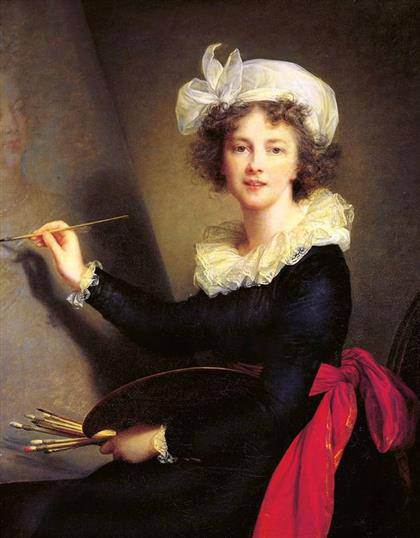
Elisabeth Louise Vigée Le Brun (French, Paris 1755-1842).
Self-portrait, 1790. Oil on canvas. Galleria degli Uffizi, Corridoio Vasariano, Florence (1905)
Vigée Le Brun retrospective at Metropolitan Museum ‘Vigée Le Brun: Woman Artist in Revolutionary France’ is the first retrospective and only the second exhibition devoted to this artist in modern times. Metropolitan Museum of Art, New York, February 15 – May 15, 2016.]]>
Source: Metropolitan Museum of Art
Elisabeth Louise Vigée Le Brun (1755-1842) is one of the finest 18th-century French painters and among the most important of all women artists. An autodidact with exceptional skills as a portraitist, she achieved success in France and abroad during one of the most eventful, turbulent periods in European history.
Born in Paris during the reign of Louis XV, Elisabeth Louise Vigée Le Brun was the daughter of a professional pastel portraitist who died when she was 12 years old. Precocious and largely self-taught, in her teens Mademoiselle Vigée, chaperoned by her mother, was already working independently as a portraitist and contributing to the support of her family. It became necessary for her to join the artisanal guild in 1774, and she exhibited publicly for the first time when she was 19 at the Salon of the Académie de Saint-Luc.
In 1789, Vigée Le Brun was forced to flee France because of her association with the queen. She traveled with her daughter to Italy where, in 1790, she was elected to membership in the Accademia di San Luca, Rome. Independently, she worked in Florence, Naples, Vienna, St. Petersburg, and Berlin. She amassed a fortune painting, among many others, the queen of Naples and her children (a 1790 portrait of her daughter, Maria Louisa, is on view), Louis XVI’s aunts (“Madame Victoire”, 1791, Phoenix Art Museum, and “Madame Adélaïde”, 1791, Musée Jeanne d’Aboville, La Fère), and Napoleon’s sister Caroline, who became queen of Naples (1807, Versailles). She spent three successful years in Vienna (“Princess von und zu Liechtenstein”, 1793, private collection, New York) and more than six years in Russia, where she took sittings from members of the family of Catherine the Great and from the former king of Poland (1797, Versailles). Her work was also exhibited in the Paris Salons while she was in exile. Vigée Le Brun finally returned to France in 1805 for good and later published her memoirs (1835 and 1837), giving voice to details about her art and life in late 18th-century Europe. She died in Paris in 1842 at age 86.
Related content
‘The Power of Prints’ at the Metropolitan Museum (exhibition, 2016)
Follow us on:


